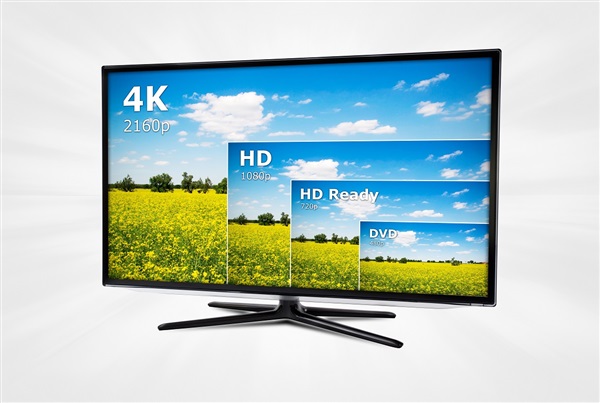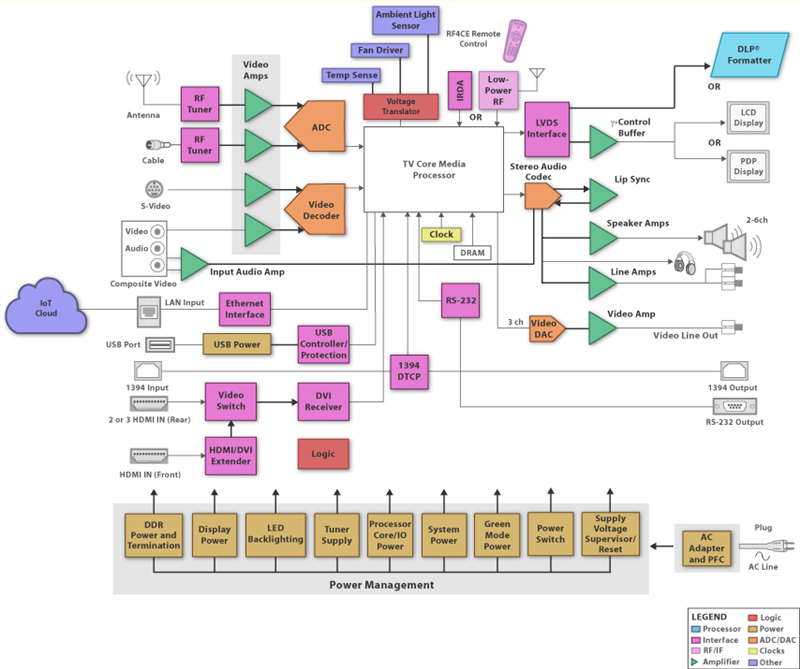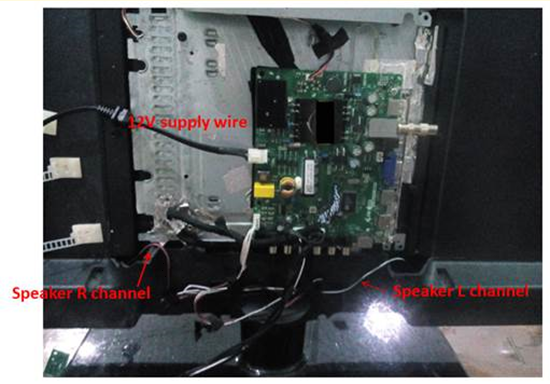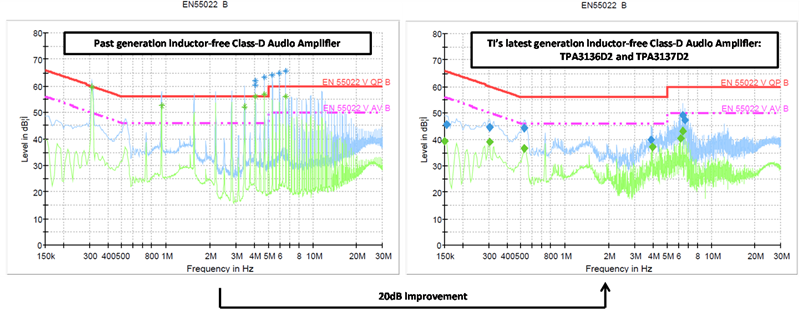SSZT971 august 2017 TPA3136D2 , TPA3137D2

It would be a mistake to dismiss the ever-present television set as lacking innovation. According to the Consumer Technology Association (CTA), every year more than 200 million TVs are sold worldwide. Although overall the technology is mature, with low growth of 1-2% and dozens of competitors, the most innovative TVs, like 4K TVs, will grow at an amazing 55% year over year for a total of 82 million units in 2017.
Higher-resolution TVs push the innovation frontier even further; however, innovation can take many forms like lower system cost, moreso in competitive markets.
Before digging into how to push the boundaries of cost-saving innovations, let’s understand TVs a little bit better.
Figure 1 shows a typical TV block diagram. As ubiquitous as TVs are, they are not a simple piece of technology. A TV is made of many different complex systems in a very small and slim enclosure, including:
- A high-voltage supply to power not only its electronic components but also its backlight.
- Interfacing systems to not only decode over-the-air and cable TV signals but also multiple video formats, both local and remote.
- An audio signal chain to emit sound from the speakers or connect the TV to a receiver or headphones.
 Figure 1 TV block diagram
Figure 1 TV block diagramNot only do these systems have to work well together, but they must not electromagnetically interfere with other nearby equipment; in other words, their electromagnetic compatibility (EMC) emissions have to be low enough to pass EMC/electromagnetic interference (EMI) standards.
Audio Amplifiers for TVs: Class-AB vs. Class-D
You have two choices when selecting the best audio amplifier for your Bluetooth® speaker systems: Class-AB or Class-D.
Class-D audio amplifiers are highly efficient switching amplifiers that need very little thermal management; however, they require output inductors that are not exempt from EMI concerns.
Solution Size, Thermal Management and EMC Compliance: System Trade-offs
A TV poses an interesting design challenge: how to keep costs down while minimizing system size in order to fit everything into a very slim and space-limited enclosure.
Class-D amplifiers’ high efficiency means that dissipated heat is kept very low and no external heatsinking is necessary; although external inductors are required, total system cost, weight and size are reduced. These additional output inductors may complicate EMC compliance, however.
To complicate matters, TVs use long wires, shown in Figure 2, to connect multiple systems to each other, exacerbating EMI concerns. These long wires typically connect the power supply to the main circuit board, the main circuit board to other secondary boards, and the audio amplifier to multiple speakers.
 Figure 2 Long wires inside TVs make EMC compliance challenging
Figure 2 Long wires inside TVs make EMC compliance challengingIn the past, these EMI concerns lengthened development time and increased cost, since component selection and placement impact EMI. Satisfying EMC compliance or adding filtering or shielding could require multiple board designs, increasing system costs dramatically.
TI’s latest generation of inductor-free Class-D amplifiers, like the TPA3136D2 and TPA3137D2, solve both of these problems: system cost and EMI performance.
Inductor-free Technology Explained
Inductor-free Class-D audio amplifiers are not new on the market; these types of amplifiers generate sound without inductors and use very low-cost ferrite beads instead of costly external inductors, although this feature comes at the expense of EMC performance. In the past, inductor-free technology was not widely used because EMC compliance would be even more difficult with ferrite beads.
 Figure 3 Inductor-free technology comparison
Figure 3 Inductor-free technology comparisonYou can also use TI’s inductor-free Class-D audio amplifiers in sound bars, home theaters and other audio equipment.
Have you had trouble passing EMC standards when using Class-D audio amplifiers? How did you resolve it? Log in and leave a comment below.
Additional Resources
- Download the TPA3136D2 and TPA3137D2 data sheets.
- Get started quickly with the TPA3136D2 evaluation module (EVM).
- Install TINA-TI™ simulation software today.